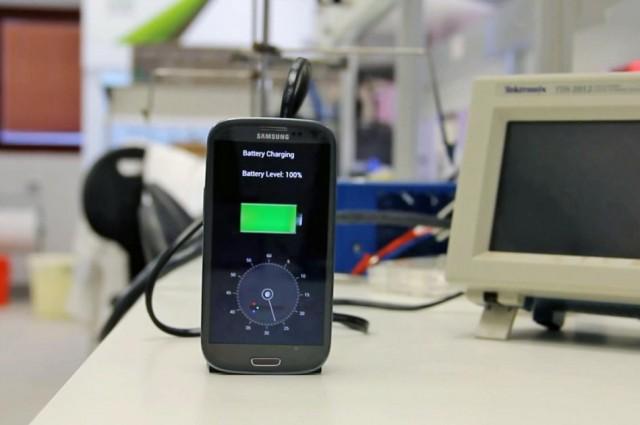
If I were to ask you what three things you would change about smartphones today, what changes would you make? Everybody’s answers would be different, but I’m willing to bet that a majority would include “better battery life” as one of the changes. Although battery life isn’t in as bad of shape as it was, say, two years ago, we’re definitely still two steps behind where we once were when it came to the average charge cycle of a cell phone. More basic phones, such as flip phones or messaging phones, were able to last anywhere from a couple of days to a week solid depending on usage - of course, those were days before data mattered as much as they do now.
So here we are, waiting patiently for the day to arrive where things are finally back to the way they were. Whether it gets to that point because the evolution of graphene finally develops enough to where we can use them in our smartphones, or because smartphones get so ridiculously large that the sheer size of the battery is able to carry it for a few days is a question that many of us have been wondering. But perhaps neither of those will end up being the solution to solve our poor battery life issues; maybe we’ve been looking at it all wrong.
I came across an interesting article today that discussed something called “quantum dots”, which is a type of battery that is being utilized by an Israeli start-up called StoreDot. In a nutshell, quantum dot batteries would be able to bring smartphones to a full charge in about 30 seconds. Normally, it takes 2-3 hours to bring a phone from completely dead to a full charge. With phones always on the move, it can be hard to set aside 2-3 hours out of your day to recharge your phone, which is why most people charge their phones once a night and use their phone sparingly throughout the day to ensure the phone lasts the entire day. With quantum dots, though, this scenario may be a thing of the past.
An electrolyte is used with current batteries to generate a charge, but this new battery uses the quantum dot nanocrystal technology. Due to this change, the quantum dot battery ends up being about five times more powerful, or “a battery equal in power, though considerably smaller” according to an article by IFL Science.
This new way of charging phones isn’t set to release until 2016, so there’s still a bit of a wait before we get there. Then again, it’s nice to have some sort of a time frame at least. We keep hearing all of this great stuff about graphene, yet we still have no true timeline of when we can expect to see the material widely used in smartphones. Perhaps if there’s no end in sight when it comes to creating batteries that last a longer amount of time, creating a battery that utilizes a faster charge seems like a decent alternative solution.
The StoreDot charger, in its current state, is said to be about the same size as the phone itself. However, plans are in place to make the charger a bit smaller for its planned commercial release in 2016. Honestly, I wouldn’t care if it was the size of a phone; if it can charge my phone fully in 30 seconds you could make it as big as you want (well, you know, within reason). The price of the charger/battery isn’t supposed to be that bad either, with an estimated $30 a pop. It seems like every time some new technology comes out it’s way overpriced, but $30 for a battery that can charge fully in 30 seconds sounds like a pretty reasonable price to me. Sign me up for two of those suckers.
Of course, this is just assuming that this idea actually comes to fruition. The idea seems solid enough, but as previously mentioned, we’ve still got awhile to wait before they would actually be available to us. Still, it’s a solution that makes a lot of sense. If you can’t tackle the problem one way, find an alternative solution. This looks to be that alternative solution when it comes to battery life. At least, I hope it is.
Readers, what are your thoughts on quantum dot batteries? Do you think the concept and the price are ones that you could get on board with? Let us know your thoughts in the comments below!
Image via IFLScience